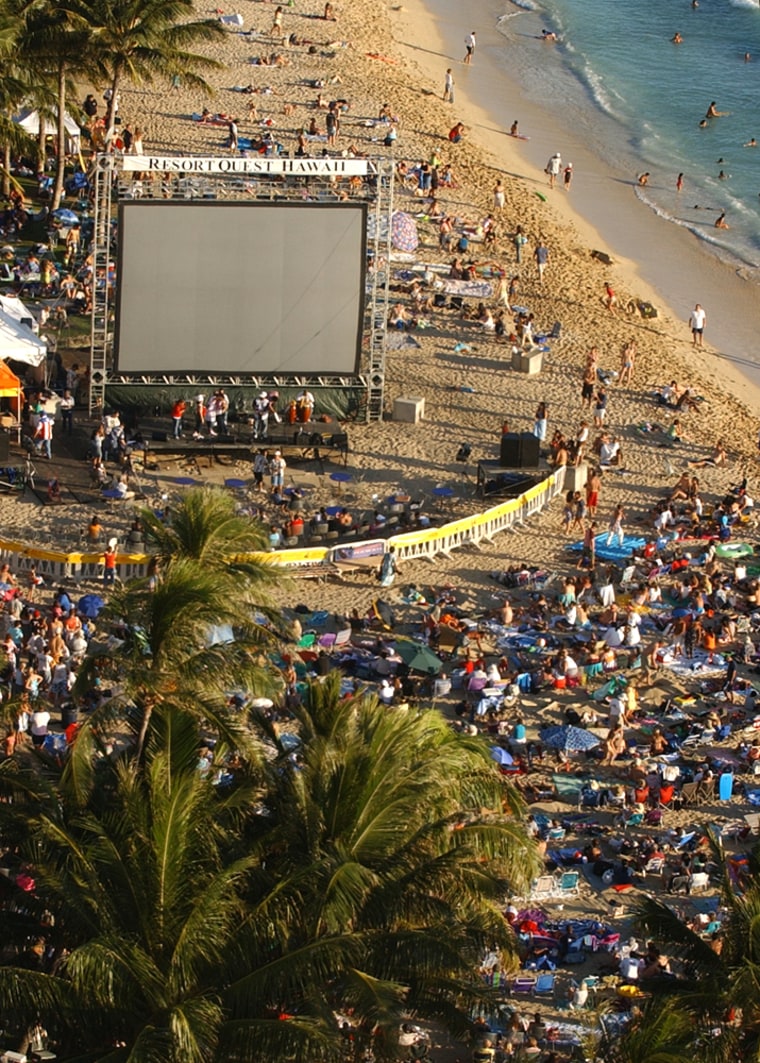More than 10,000 people packed Waikiki Beach for what promised to be a star-studded event — a front-row seating to a rocket propelled collision between NASA's space probe and a speeding comet half the size of Manhattan.
The open-air movie screen usually features Hollywood films, but Sunday night was reserved for images of an 820-pound copper probe hurtling 83 million miles from Earth.
Amy Rustan, one of the skywatchers, spotted a red streak that lasted about five seconds in the southwestern sky at the time of impact. The probe hit the Tempel 1 comet just before 11 p.m. PDT, according to mission control at NASA's Jet Propulsion Laboratory in Pasadena, Calif.
"I feel pretty fortunate," said Rustan, 19, who said her younger brother now wants to become a NASA scientist.
On the Big Island of Hawaii, a collective "Wow!" went up from hundreds of people at the W.M. Keck Observatory in Waimea, home to telescopes atop Mauna Kea that would record the event. The action unfolded on three large screens, one showing a live feed.
"It's a pretty boring picture right now," said Fred Chaffee, the observatory's director, referring to a small white starburst in the middle of a dark blue sky. "But for all of us in science, this is an extraordinary night."
Brian Spears, 19, an anthropology student and Star Trek fan from San Bernardino, Calif., called the event "really a key point in our whole lives. We might find out the origins of how we came along."
Other skywatchers gathered at the Bishop Museum on Oahu, the University of Hawaii-Hilo and at Maui Community College on the Valley Isle.
Bob Joseph, faculty chair at the University of Hawaii Institute for Astronomy, commended NASA scientists.

"Nobody has ever done an experiment like this ever in the history of the world," he said. "If it works, of course, everybody will feel brilliant. If something goes wrong, everybody's going to see it going wrong."
Meanwhile, Steve Lin was glad he brought his 7-year-old son, Robi, to see NASA's mission dubbed "Deep Impact."
"It's almost like one of those science fiction movies," said Lin, a Honolulu physician, as his son zipped around his beach blanket.
Lin also acknowledged that he came more for his own interest than his son's.
"He doesn't understand a thing about this at all," Lin said. "He's just here for dinner and a beach party."
